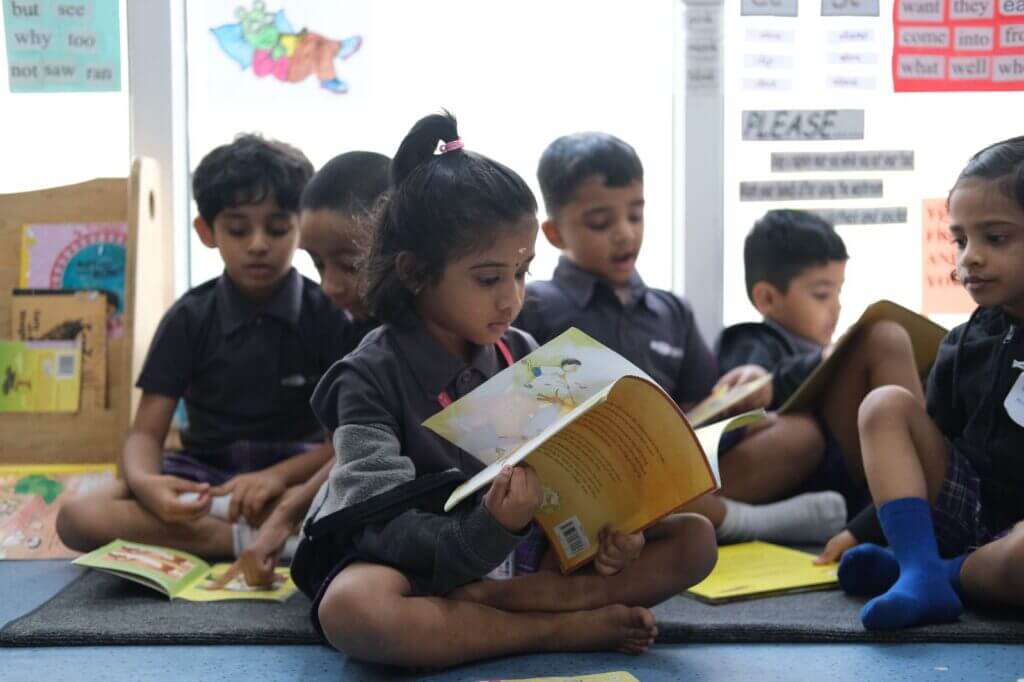As educators, we know that assessments can be a powerful catalyst for learning—but only if they’re designed with purpose. What if our assessments could go beyond scores and truly reflect the skills, curiosity, and potential within each student? This week, let’s delve into ways to transform assessments into meaningful experiences that foster engagement, growth, and lifelong learning.

Traditional assessments often emphasise memorisation and retrieval, but the true essence of assessment is realised when students are asked to apply their knowledge creatively and critically. This redefines assessments as learning experiences that are meaningful and enduring. We have to shift the perspective that assessments are for teachers when it is ideally an opportunity for students to further their learning.
Let’s watch this video to understand five key elements of comprehensive assessments.
fter watching the video think about the following questions:
How do you look at assessments? Has this perspective shifted post the video?
What kind of assessments are you using in your classrooms?
Are your students benefitting from your assessment systems?
What would you like to change?
Let’s now look at various assessment methods other than standardised testing.
Alternatives to traditional testing methods
Traditional assessment methods, such as standardised testing, often fall short in capturing the diverse skills, talents, and qualities that students possess. By incorporating alternative assessment methods, educators can gain a more comprehensive and accurate understanding of a student’s overall abilities. This includes assessing critical thinking, creativity, problem-solving skills, communication, and collaboration.
Alternative methods, such as utilising digital platforms, project-based assessments, portfolios, and peer evaluations, allow for flexibility and accommodate diverse learning preferences.
I. Digital platforms
The integration of educational technology opens new horizons for interactive assessments. Platforms offering virtual simulations, interactive quizzes, and gamified learning experiences not only engage students but also provide dynamic insights into their comprehension.
II. Project-Based Evaluation
Project-based assessments immerse students in practical applications of knowledge. From science experiments to community service projects, these assessments foster creativity, critical thinking, and real-world problem-solving.
III. Creative Reflections
Portfolios serve as comprehensive narratives of a student’s educational journey. Including essays, artwork, reflections, and other artefacts, portfolios offer a holistic view, showcasing the evolution of skills and critical thinking over time.
Here is an example of how educators can assess their students’ progress through drawings. When students translate the concepts they’re learning into visual representations, it reveals much about how deeply they understand the material.
IV. Peer Reviews
The key benefits of peer review include fostering a sense of community, promoting a more inclusive evaluation process, and providing individuals with valuable feedback for growth and improvement.
V. Formative Assessments
One way to shift assessments from “judgement” to “growth” is by incorporating formative assessments—ongoing, low-stakes activities designed to provide timely feedback. Unlike end-of-unit tests, formative assessments encourage students to continuously refine their understanding.
For example, you can use tools like Exit Ticket and Think-Pair-Share. Exit tickets give teachers immediate insights into areas requiring reinforcement. Think-Pair-Share encourages self-reflection and helps students articulate their understanding in a collaborative setting.
Assessments Beyond Academics
Assessments should extend beyond academic achievements, and extend to also include the mental, emotional and social well-being of our students.
Here are some ways to continuously keep a check on our student’s well being:
I. Mental Well-being Check-Ins
Regular check-ins and assessments focused on mental well-being help identify signs of stress or anxiety. Educators can collaborate with counsellors and parents to provide the necessary support systems for students facing mental health challenges.
-
Circulate anonymous surveys or questionnaires in regular intervals that allow students to express their feelings and concerns without fear of judgement.
-
You can also have one-on-one conversations as part of the process.
II. Social-Emotional Learning (SEL) Assessments
Assessing social and emotional skills, such as empathy, self-awareness, and relationship-building, is crucial. SEL assessments contribute to creating a positive and inclusive learning environment along with enhancing students’ interpersonal skills.
-
Develop checklists or rubrics specifically focused on SEL skills. These tools can provide a structured way to assess and track students’ progress in areas such as communication, teamwork, and self-regulation.
-
Introduce reflective journals where students can express their thoughts and emotions. This practice promotes self-awareness and allows educators to gain valuable insights into individual student experiences.
Rethinking Assessments: Designing Meaningful Evaluations for Student Growth
Assessments are more than just grades—they shape learning, guide instruction, and empower students to reach their full potential. But are we designing assessments that truly capture student growth and understanding?
Traditional grading methods often fall short, limiting our ability to measure deeper learning and critical thinking. It’s time to rethink assessments and explore innovative, effective strategies that foster meaningful progress. Ready to transform the way you assess student learning? Enroll in our Self-Paced Course on Effective Assessment Design Practices and gain practical insights into creating impactful, learner-centered evaluations.
